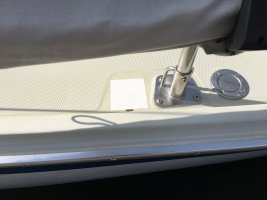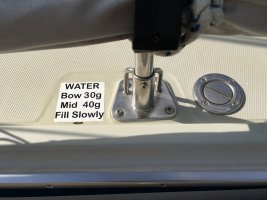Opinion Piece:
(and worth 2 cents on a god day)
"Stress Cracking" is a phrase that gets used a lot, and often for only distantly-related problems and reasons.
The most fraught meaning, for most listeners, is an indicator of underlying weakness in the either engineering or construction... that is revealed by the crack in the surface. This is pretty rare in my experience. I have seen it once where it was obvious, in a small Islander 23 sailboat where the deck structure showed a crack on each side of the area where the combing was molded into the side of the cabin area. While it was holding together OK, the whole boat was flexing at that point.
The other manifestation is either a void in the immediate area under the gel coat, or a place the gel coat was initially sprayed too thick, during layup.
Gel coat will slowly, over years/decades slightly shrink as it continues to cure out. And like the cracking the ground in a drought area, the surface will pull apart a bit. Extra thickness
really exacerbates the problem. There might also be a QC problem with the gel resin when it was sprayed -- Islander had several boats in the 70's with cracking/aligatoring all over (!) their decks and cabins. Structure seemed fine, but the appearance was disturbing.

On our EY boats, we can get some cracking if the gelcoat was not backed up thoroughly, or sometimes a small void was left. Look for this anywhere the mold had a fairly "sharp" edge, such as along a combing edge.
Currently, we have found and repaired a few small voids on the Olson, and they occur where you might predict. Our cast-in recesses for the stanchion bases have needed some repairing, for instance.
OTOH, we have found almost zero moisture in the balsa coring, as the guys at EY generally did an above average job on the layup and on initial bedding parts with 5200. Lots... of 5200. Lots....

I would guess that the biggest concern for most owners is not the repair, but getting a close match on the gel coat color. (!)




